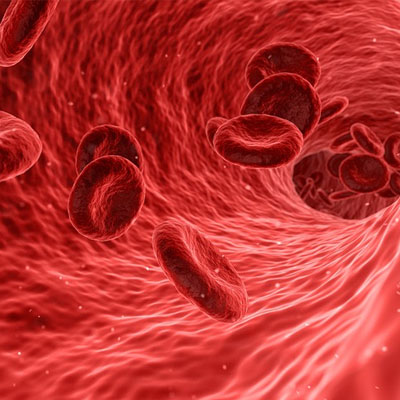Ridker et al. (2001) noted that adults with diabetes have more atherosclerosis in their arteries and microvasculature than people without diabetes. Most of the deaths among people with diabetes are from coronary heart disease. Their whole blood viscosity, plasma viscosity, and hematocrit are elevated, and red blood cell deformability is consistently decreased.
The increase in diastolic blood viscosity has been attributed to increased fibrinogen and globulin (Dintenfass 1977, Hoare et al. 1976).
Solerte and Fioravanti (1987) studied 22 patients with insulin-dependent diabetes and overt nephropathy and 24 diabetic patients without renal changes. Blood viscosity was higher and red blood cell deformability was lower in the patients with nephropathy than in the patients without nephropathy. In addition, increased blood viscosity and decreased red cell deformability were correlated with impairments in glomerular filtration rate and renal plasma flow in patients with overt nephropathy.
Linderkamp et al. (1999) compared whole blood viscosity in two groups of children with diabetes and a control group of healthy children. One group of children with diabetes was studied before and after four to six weeks of treatment with insulin; the other group was studied after being treated with insulin for five to eight years. In both groups of children with diabetes, blood viscosity and hematocrit were higher and red cell deformability was lower than in the control group.
Associations with blood viscosity have been documented for risk factors for diabetes like the insulin sensitivity index and markers for the metabolic syndrome. Nordby et al. (1995) reported that in 14 hypertensive and 12 normotensive premenopausal women, blood viscosity was negatively related to the insulin sensitivity index. Lo Presti et al. (2002), who found significantly increased blood viscosity in people with metabolic syndrome, commented that the altered hemorheologic profile is a likely explanation of the increased cardiovascular risk in metabolic syndrome.
Sources:


Comments are closed.